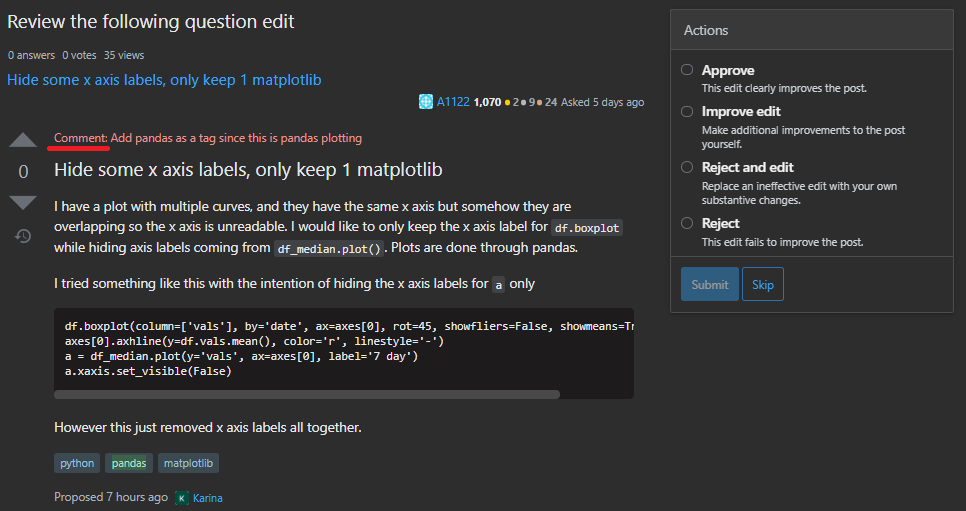I have noticed that when you submit an edit, the edit summary is called "Edit Summary", while when reviewing edits it's simply called "Comment". I feel like it would be good to make them both read the same thing. Probably "Edit Summary" is the best option. See images below
Justification:
The word "Comment" is a bit misleading and doesn't reflect what the box is actually for
Using different terms can lead to confusion when referring to that "thing". Personal story:
Often when reviewing, I choose the "This edit causes harm" option, so I can elaborate why I think the edit was bad. Before noticing this, if I wanted to refer to the text the suggester provided, I called it a "Comment", which I am sure has been confusing for some (since they don't see that term).
It is called "Comment" in the review queue:
While it is called "Edit Summary" when editing:


